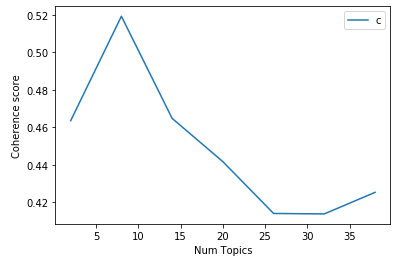Blog, Consulting
At WeCloudData, we empower learners to bridge the gap between theory and real-world data science skills. In this blog,…
by WeCloudData
May 29, 2025
Blog
The blog is posted by WeCloudData’s Big Data course student Udayan Maurya.
Customer reviews are invaluable information to understand the gap in your product market fit. If you sell your products on e-platforms: Amazon, Ebay, Appstore, Playstore, Youtube, etc. then you are in luck. You have direct access to your customers mind. However, to leverage customer’s input in your product development you need more than just “Star-Ratings”. Star-Ratings are useful to gauge at a high level how your product is being received in the market, but it does not provide any actionable insights into what you should do to improve your product offerings.
Reading review texts is defiantly a better option to extract customer insights, you get to understand about what features are helping customers solve their problems and what features are causing problems to customers. Additionally, customers often mention their expectation in reviews. However, reading reviews manually causes following problems:
Natural language processing equips us with tools, which can help us read and understand customer reviews. We can develop insights on our product features. Know what features of our product are working, what features need improvement and what are customer expectations from our product.
In following sections I will provide NLP Topic Analysis I have applied to research Amazon Customer Reviews data. The analysis helps in identifying customer pain points with the products.
Data used is the study is publicly available data provided by Amazon:
For analysis Amazon S3 bucket (original location of data) has been mounted on Databricks instance. Following is schematic flow of entire process:

Amazon Review data-set is massive collection of 130+ million customer reviews, which ranges from year 1995–2015. The data-set contains “.tzv.gz”(Zipped tab separated) files. There are 46 files with English reviews (total size ~32GB). Each file comprise of reviews for different product segment. Due to non-trivial size of input data Spark on Databricks Platform has been used to train Machine Learning mode. Data-set has following variables:

In out Analysis we have performed Topic Modeling on “review_body”.
Following steps are taken to paperer the data:
LDA models are very popular for the task of Topic modeling. Spark MLlib comes packaged with LDA models. Additionally, we have Gensim’s LdaMallet models, which are very good at finding useful topics in text corpus. Upon training on a smaller sample of data. Gensim model produced much more comprehensive results compared to Spark’s LDA model.
Technical bottleneck with Gensim is that it runs on single cluster machine and cannot be trained on partitioned. Due to non-trivial size to be consumed. Utilizing Spark cluster capabilities provides huge performance benefits, in terms of parallel training, and reducing overall training time.
To get best of both worlds Gemsim LDA models are trained on Spark cluster in embarrassingly parallel fashion. Please review my other blog-post on technical details of Training Embarrassingly Parallel Models on Spark using Pandas UDF. As our objective in this use case is to obtain one model for each product segment, embarrassingly parallel on single partitions of Spark RDDs help us run model training in parallel for each product segment significantly reducing the total training time.
To determine number of topics to be use we have used Coherence Score to compare LDA models.

Coherence score is a numerical way to compare Topic models. The higher the score the better the model is. In above case model with 8-topics performs the best.
Best models for Segments: Health-Personal-Care, Luggage, Apparel , and Electronics are deployed on AWS-EC2 instance. The model dashboard has be developed using Bokeh, and Panel libraries. One product , Yogamat, Bag, Coat, and Micro-SD card, from each segment is selected for Analyzing.
Below is an image of Application in action:

The Model can be developed to include bi-gram and tri-gram tokens to discover more characteristic topics. Additionally, more common (trivial words ) can be removed form corpus by segment to make useful/meaning carrying words more prominent.
The Model/Methodology is very transferable to other kinds of reviews. For example reviews on Appstore, Playstore, YouTube, etc.
To find out more about the courses our students have taken to complete these projects and what you can learn from WeCloudData, view the learning path. To read more posts from Udayan, check out her Medium posts here.
"*" indicates required fields

WeCloudData is the leading data science and AI academy. Our blended learning courses have helped thousands of learners and many enterprises make successful leaps in their data journeys.
"*" indicates required fields
Canada:
180 Bloor St W #1003
Toronto, ON, Canada M5S 2V6
US:
16192 Coastal Hwy
Lewes, DE 19958, USA